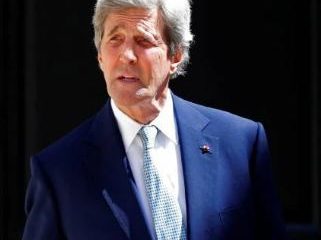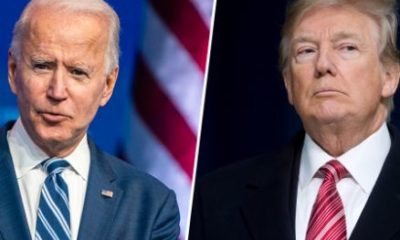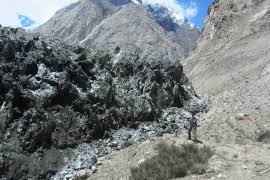Feature
India rejects Sharif’s ‘peace initiative’ to demilitarise Kashmir

United Nations: India has rejected Pakistan Prime Minister Nawaz Sharif’s “peace initiative” saying that de-terrorising Pakistan is the answer, not demilitarising Kashmir.
After raising the Kashmir issue at the General Assembly on Wednesday, Sharif proposed a four-point peace initiative for India that embraces demilitarising Kashmir, renouncing the use or threat of use of force, withdrawal from Siachen Glacier and formalising ceasefire along the Line of Control.
In a rapid response, External Affairs Ministry Spokesman Vikas Swarup tweeted, “To de-militarise Kashmir is not the answer, to de-terrorise Pakistan is.”
“Peace can be achieved through dialogue, not disengagement,” Nawaz said in his address to the General Assembly. “Cooperation, not confrontation, should define our relationship.”
But before proposing the peace initiative, Nawaz made the acrimonious reference to Kashmir, equating it with Palestinian and portraying it as a religious issue.
“Muslims are suffering across the world: Palestinians and Kashmiris oppressed by foreign occupation,” he said.
“The international community must redress these injustices against the Muslim people.”
Swarup replied in a Tweet, “Pak(istan) PM gets foreign occupation right, occupier wrong. We urge early vacation of Pak(istan) occupied Kashmir.”
Just after trying to internationalise Kashmir, Nawaz tried to couch the peace proposal as a bilateral move since India’s condition is that the Kashmir dispute is a bilateral one and there should be no outside involvement. However, it did included a request to increase the UN Millitary Observers Group in India and Pakistan (UNMOGIP).
Although, Nawaz tried to strike a conciliatory note with his proposal and its phrasing, he insisted elsewhere in his speech on “consultations with Kashmiris, who are an integral part of the dispute.”
New Delhi considers Kashmir an integral part of India and any such move an interference in internal affairs and counterproductive to a dialogue. Recent attempts at holding bilateral talks have been sabotaged by Pakistan bringing in the Kashmir question or engaging Kashmiri separatists.
Sharif referred to the recent ceasefire violations along the Line of Control and asserted, “Wisdom dictates that our immediate neighbour refrains from fomenting instability in Pakistan.”
He said that “the two countries should address and resolve the causes of tension and take all possible measures to avert further escalation” and for this he asserted he was making the peace initiative proposal.
These were the four points in his proposal:
– Pakistan and India formalise and respect the 2003 understanding for a complete ceasefire on the Line of Control in Kashmir with increased monitoring by the UNMOGIP
– Pakistan and India reaffirm that they will not resort to the use or the threat of use of force under any circumstances.
– Demilitarise Kashmir
– Unconditional mutual withdrawal from Siachen Glacier,
“An easing of threat perceptions through such peace efforts will make it possible for Pakistan and India to agree on a broad range of measures to address the peril posed by offensive and advanced weapons systems,” Sharif said.
However, beyond the international publicity that Nawaz hopes his announcement could generate for him, his initiative has internal contradictions.
As Swarup said in his tweet, demilitarising Kashmir would not be possible unless there was an end to terrorists backed by elements in the Pakistani government crossing over, which would be an unlikely development.
Similarly, the border tensions have been a result of cross-border terrorism.
Nawaz did not offer any credible solutions to terrorism directed against India, including a crackdown on anti-India terrorists or handing over to India those wanted for terror in India.
Swarup noted in a Tweet, “Pakistan’s instability arises from its breeding of terrorists. Blaming neighbors is not a solution.”
Nawaz tried to portray his country as “the primary victim of terrorism” and said, “We will fight terrorism in all its forms and manifestations, irrespective of who their sponsors are.” He referred to Operation Zarb-e-Azb, which, he said, “has made substantial progress in cleansing our country of all terrorists and will conclude only when our objective has been accomplished.”
On Monday, Afghanistan CEO Abdullah Abdullah, however, accused Pakistan on being a sanctuary for terrorists and of going back on its word to stop terrorism against his country.
Nawaz said Islamabad supported Security Council reforms. He did not make any direct mention of India’s quest for a permanent seat. But in a snide remark that can be interpreted as directed against India, he said what was wanted was “not a Council, which is an expanded club of the powerful and privileged.”
Entertainment
Meghalaya Reserves Legalized Gambling and Sports Betting for Tourists

The State Scores Extra High on Gaming-Friendly Industry Index
Meghalaya scored 92.85 out of 100 possible points in a Gaming Industry Index and proved to be India’s most gaming-friendly state following its recent profound legislation changes over the field allowing land-based and online gaming, including games of chance, under a licensing regime.
The index by the UK India Business Council (UKIBC) uses a scale of 0 to 100 to measure the level of legalisation on gambling and betting achieved by a state based on the scores over a set of seven different games – lottery, horse racing, betting on sports, poker, rummy, casino and fantasy sports
Starting from February last year, Meghalaya became the third state in India’s northeast to legalise gambling and betting after Sikkim and Nagaland. After consultations with the UKIBC, the state proceeded with the adoption of the Meghalaya Regulation of Gaming Act, 2021 and the nullification of the Meghalaya Prevention of Gambling Act, 1970. Subsequently in December, the Meghalaya Regulation of Gaming Rules, 2021 were notified and came into force.
All for the Tourists
The move to legalise and license various forms of offline and online betting and gambling in Meghalaya is aimed at boosting tourism and creating jobs, and altogether raising taxation revenues for the northeastern state. At the same time, the opportunities to bet and gamble legally will be reserved only for tourists and visitors.
“We came out with a Gaming Act and subsequently framed the Regulation of Gaming Rules, 2021. The government will accordingly issue licenses to operate games of skill and chance, both online and offline,” said James P. K. Sangma, Meghalaya State Law and Taxation Minister speaking in the capital city of Shillong. “But the legalized gambling and gaming will only be for tourists and not residents of Meghalaya,” he continued.
To be allowed to play, tourists and people visiting the state for work or business purposes will have to prove their non-resident status by presenting appropriate documents, in a process similar to a bank KYC (Know Your Customer) procedure.
Meghalaya Reaches Out to a Vast Market
With 140 millions of people in India estimated to bet regularly on sports, and a total of 370 million desi bettors around prominent sporting events, as per data from one of the latest reports by Esse N Videri, Meghalaya is set to reach out and take a piece of a vast market.
Estimates on the financial value of India’s sports betting market, combined across all types of offline channels and online sports and cricket predictions and betting platforms, speak about amounts between $130 and $150 billion (roughly between ₹9.7 and ₹11.5 lakh crore).
Andhra Pradesh, Telangana and Delhi are shown to deliver the highest number of bettors and Meghalaya can count on substantial tourists flow from their betting circles. The sports betting communities of Karnataka, Maharashtra, Uttar Pradesh and Haryana are also not to be underestimated.
Among the sports, cricket is most popular, registering 68 percent of the total bet count analyzed by Esse N Videri. Football takes second position with 11 percent of the bets, followed by betting on FIFA at 7 percent and on eCricket at 5 percent. The last position in the Top 5 of popular sports for betting in India is taken by tennis with 3 percent of the bet count.
Local Citizens will Still have Their Teer Betting
Meghalaya residents will still be permitted to participate in teer betting over arrow-shooting results. Teer is a traditional method of gambling, somewhat similar to a lottery draw, and held under the rules of the Meghalaya Regulation of the Game of Arrow Shooting and the Sale of Teer Tickets Act, 2018.
Teer includes bettors wagering on the number of arrows that reach the target which is placed about 50 meters away from a team of 20 archers positioned in a semicircle.
The archers shoot volleys of arrows at the target for ten minutes, and players place their bets choosing a number between 0 and 99 trying to guess the last two digits of the number of arrows that successfully pierce the target.
If, for example, the number of hits is 256, anyone who has bet on 56 wins an amount eight times bigger than their wager.





















